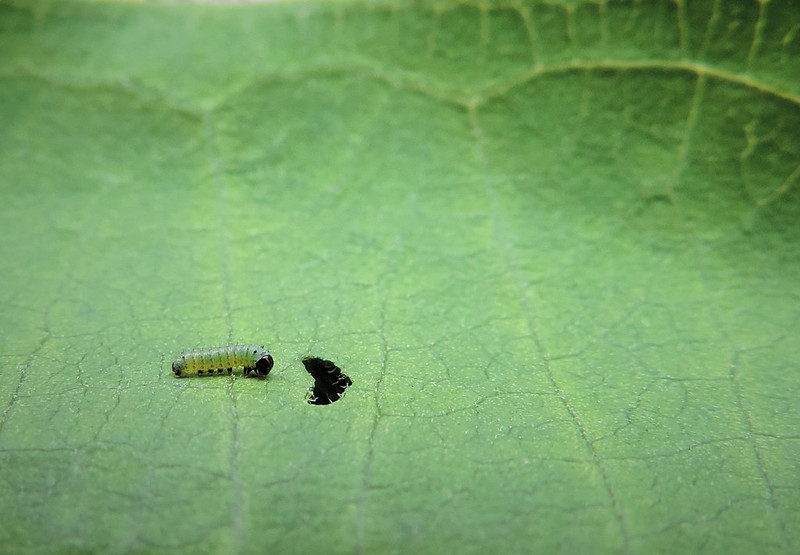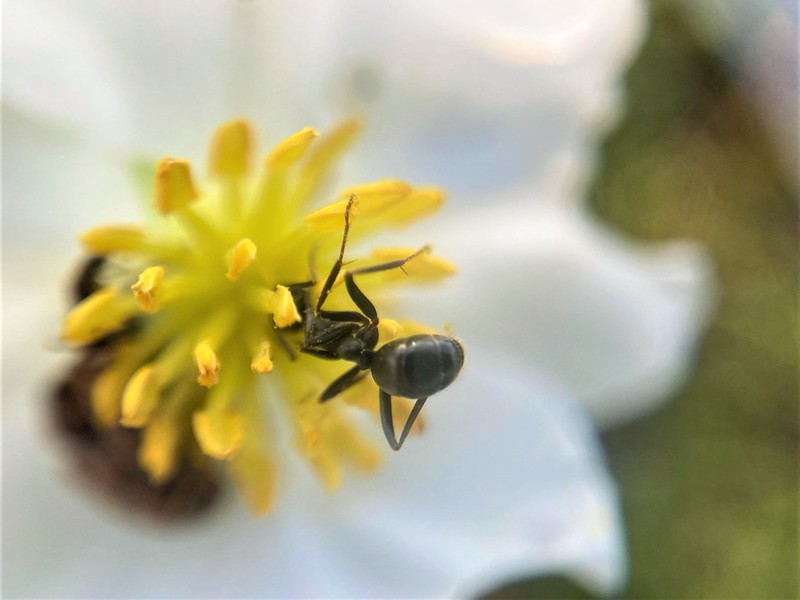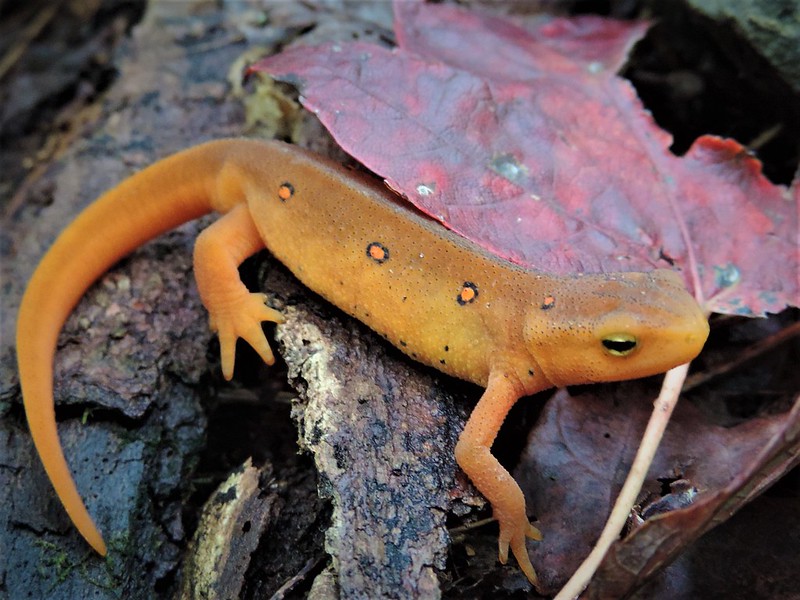I recently road my bike to work. I pedaled along some of the same roads that I usually drive. Riding a bike is a constant change of view. Down at the road. Up at eye level. Through the rearview mirror. Am I going to run over anything? What’s ahead of me? What’s behind me?
In one glance down, I notice something bright orange. There it is again and again. Newts. Red Efts, to be precise. The Eastern (Red-Spotted) Newt is one of the amphibians native to this region. Adult newts lay eggs in the water. The larva feed, grow, and breathe in the water. However, in their juvenile stage they develop lungs and roam the land, dispersing to other bodies of water and ensuring the spread of the population and their genes. In this juvenile stage, the newt looks so different than the larva and the adult, it has earned its own name — Red Eft. With bright, orange skin peppered with red dots outlined in black, they are noticeable on the forest floor in the summer and fall.
Or on the road. But all these Red Efts were run over, flattened by the fast moving, tires of cars and trucks. Perhaps my tires. I feel bad. But there’s no way a driver would know, secure in a sealed, two-ton car that they were crushing a creature about the size of their index finger. It is only on my bike, moving at a quarter of the speed that I notice. I imagine I would notice more if I got off and walked. More still if I bent down and crawled.

Because what we see is based on where we are. But also what we can imagine. It is all about perspective. On my bike, I don’t crawl but I do look around. A forest on one side of the road. A slow-moving creek on the other. I zoom up high in my imagination and see this edge habitat. I see the small ponds in the forest that perhaps held the newt eggs and larva. I see the dampness from yesterday’s rain, making travel more appealing to these amphibians, who prefer wet ground to dry. I see the road, cutting harshly through their habitat, causing these mini tragedies I almost knew nothing about.
I first heard about this zoom in, zoom out way of looking at things from Tracking and the Art of Seeing by Paul Rezendes. An experienced animal tracker, he encourages looking at animal tracks and signs from many perspectives. First the individual track’s shape, size, and other details. Then zoom out at look at the pattern of the track. Are the tracks far apart, or close together? Where did they come from and where are they going? What did the animal walk over, under or through? Then zoom out farther to look at the landscape. The type of habitat- forest, field, wetland, edge, urban — is a clue as to what animal was passing through. Shifting perspective is helpful in not only solving a mystery but understanding the animals he tracks.
A colleague of mine was recently sharing images a photographer took looking up from underneath a mushroom. They were exquisite in their detail, their light and their unique point of view. Artists have a way for changing perspective and sharing it with others. It inspired me to take a short walk and look at things in a way I wasn’t use to. I optimistically took my phone with a small magnifying glass device. The Easy-Macro is a round lens built into a rubber band. It stretches around a phone, the lens going over the camera to provide 4x magnification that stays in place as you move around.

I looked closely at flowers, not realizing that on so many, the stamens look like little mustaches. I looked at the pores and gills of fungus only to find the smallest of small insects tucked inside. What must it be like to walk in the gills of a mushroom that tower up around you like skyscrapers? Or to be a tiny caterpillar, where your whole world is a leaf. Do you walk off the edge in the hopes of something more?
I lay down along the edge of the pond to watch ants bury their heads among the yellow centers of Arrowhead flowers. A muskrat harvested roots or leaves nearby, its small body just inches above the water. Its senses attuned to the slightest change in the environment. And I, getting too hot in the sun, return to the office, thinking about all the different ways there are to see the world.

Changing your perspective has practical purposes other than learning about and interpreting the natural world. I like to think of it as practice for when I need to change my perspective in the rest of my life. Perhaps with a problem I can’t seem to resolve. Perhaps with a person I can’t seem to understand. Can I look at it in a new way? Nature is an endless source of beauty and pain, joy and sorrow, inspiration and peace. It is all in how we look at it.
Audubon Community Nature Center builds and nurtures connections between people and nature. ACNC is located just east of Route 62 between Warren and Jamestown. The trails are still open from dawn to dusk as is Liberty, the Bald Eagle. The Nature Center is partially open, including restrooms, the Blue Heron Gift Shop, and some exhibits. More information can be found online at auduboncnc.org or by calling (716) 569-2345.


Recent Comments